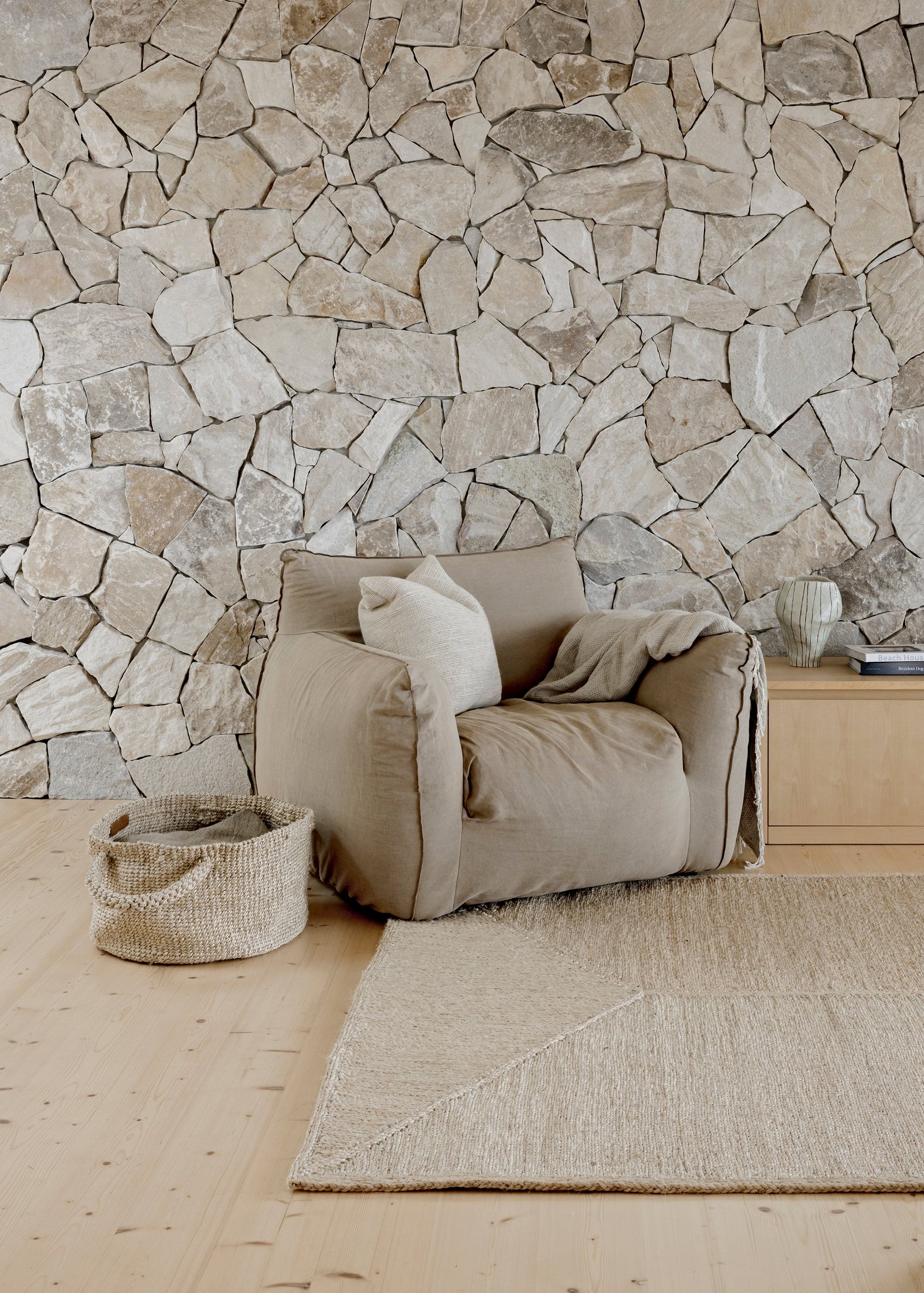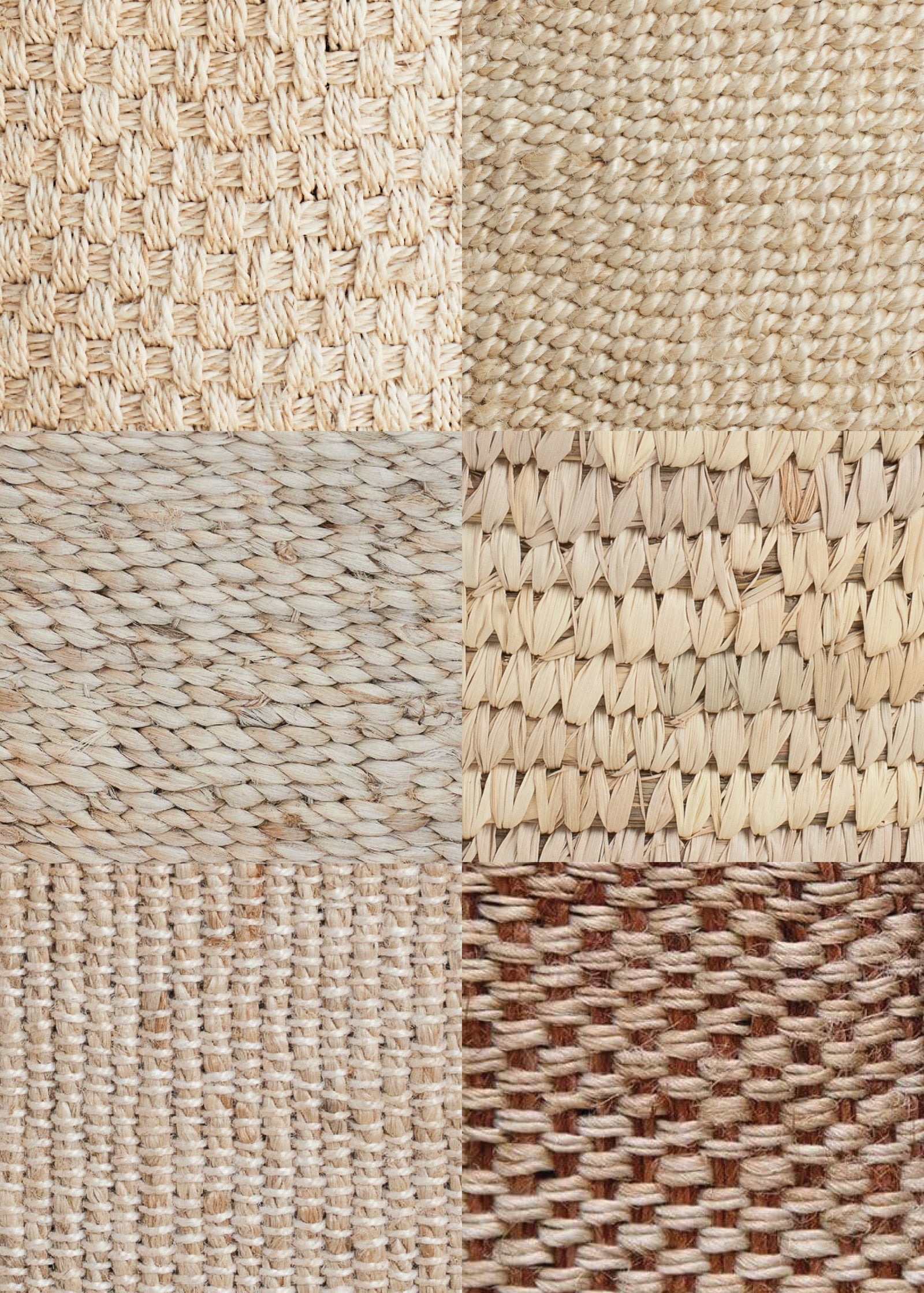Wall Art
Baskets
Rugs
TABLEWARE
Textiles
LIGHTING
DECORATIVE
BAGS
Behind the Design - Clay beads, Amtali Tassels & Mawa Brooms

The latest items from The Dharma Door are drawn from everyday life in Bangladesh. Strings of hand-rolled terracotta beads, grass tassels and decorative woven brooms provide a simple, affordable and on-trend way to invite a touch of nature into your home.
Always motivated to develop new and original ways to add texture and warmth to our interior spaces, The Dharma Door’s founder Shannon Sheedy found inspiration for each new piece in readily-available raw materials and lesser-known traditional techniques.
The Mawa Broom, Amtali Tassels, Clay Beads and Clay Garland have been handmade with abundant local grasses, palm fronds and clay - using skills usually reserved for crafting domestic objects and tools. Slightly embellished to ‘lift’ them to adornments, they are intended to hang from coat racks, wall hooks, mirrors and archways, and sit equally well alongside greenery and other natural objects on sideboards and coffee tables.
Here, Shannon shares some of her design thinking behind each piece, as well as an insight into how their production play an important role in securing ongoing employment for traditional artisans and the preservation of their craft.
 Much of the inspiration for these new items has come from the visits you make to meet with artisans in remote, rural communities of Bangladesh. Can you share a little about this process?
Much of the inspiration for these new items has come from the visits you make to meet with artisans in remote, rural communities of Bangladesh. Can you share a little about this process?
For as long as I can remember I’ve had an interest in history and provenance. The more I learn about a place, the more my deeper interest deepens into the origin of it’s people and crafts. We’ve been working in Bangladesh for almost 12 years, so I have a natural curiosity to discover more and see how The Dharma Door can contribute to preserving traditional crafts and provide regular work to artisans.
When crafts die slowly in developing countries, artisans are usually forced to migrate, find other work in fields like labouring, or simply live in poverty. This affects families, future generations and the craft itself.
In 2018, we were looking to add new materials – in addition to jute – to The Dharma Door collection. As with everything in our range, new products need to meet our selection criteria: each item is Fair Trade; made by artisans; handmade; crafted from natural materials; sustainable; high quality and fits with our aesthetic. Importantly, it must also be marketable and desirable to our customers. It’s a long list, but this is what has shaped our brand and helps us to stay focused on a clear vision when designing new products.
As my design experience evolves and our relationships with our artisan partners continue to strengthen, I become more confident in developing new products based on my own research. Rather than only relying on what is presented to us as being available, I am learning about crafts still practiced in Bangladesh today that are usually reserved for local markets.
The artisans who make these products don’t usually make things that are suitable for our customers. By understanding their craft, we are able to design and develop products using their traditional skills and materials. This helps us to reach our goal - to provide regular work.
 Can you share some of the more specific inspiration behind each piece, beginning with the Clay Beads and Clay Bead Garland
Can you share some of the more specific inspiration behind each piece, beginning with the Clay Beads and Clay Bead Garland
While researching traditional crafts in Bangladesh, I discovered a rich history of terracotta pottery dating back to 300BC. There are small pockets of pottery artisans still practicing the craft in the country today, with the skill usually passed down through generations.
We often see shops filled with utilitarian terracotta vessels for carrying water and cooking when travelling in Bangladesh. Many of our artisans work from home, so we also see how they use clay pots when we visit them. One of my favourite things to eat on these trips is pot-set yogurt, which is naturally set in similar rustic, clay pots. There are also potters who specialise in making sculptures and murals for worship and showpieces.
I had been wanting to add some handcrafted, decorative beads to our collection for many years. So I reached out to one of the non-profit NGOs that we partner with and they immediately knew of a pottery group in need of support. The artisans hand roll the clay beads and fire them at a high temperature in wood-fired kilns. This results in some of the terracotta beads being slightly blackened, giving them a beautiful rustic appearance. Imperfect in shape, colour and texture, they truly embrace the concept of wabi sabi. We’re now designing a selection of other clay items with a similar aesthetic to continue to provide work to these pottery artisans.
Earthy and tactile, our strings of hand-rolled Clay Beads offer a simple, stylish way to introduce the current terracotta and clay trend into the home. Display them in a bowl or tray on a coffee table or sideboard, or on top of a stack of books. Hang them from a coat rack or wall hooks to introduce a different texture to existing woven bags or textiles.
The Clay Garlands can be styled as a feature piece by draping them across a wall, doorway or window or amongst potted plants. Like the string of beads, they will could also be hung from a coat rack or wall hooks to introduce the clay trend in a space.
 What is behind the design of the Amtali Grass Tassels?
What is behind the design of the Amtali Grass Tassels?
Pathi grass is a fibrous plant cultivated and harvested in northern Bangladesh. The artisans wash and dry the pathi grass fibres and traditionally weave them by hand or on looms. For our Amtali tassels, they have trimmed pieces of grass to length and then added lovely woven detail to bind them around the top to the jute rope.
Designed with a tassel attached to each end of a long plaited jute rope, the Amtali tassels are perfect to use as rustic, tribal tie-backs for linen or cotton curtains. They will also add a lovely textural touch to a space when hung from racks, single hooks or draped around a door handle.
 And what about the Mawa Broom? Available in two sizes, how did you design and these pieces?
And what about the Mawa Broom? Available in two sizes, how did you design and these pieces?
We often see a much simpler version of the Mawa Brooms when travelling in Bangladesh. The thin sticks are cut from the centre of the fronds of coconut palms, which are grown everywhere throughout the rural areas of the country. For general household use, local people bundle the sticks together with a simple tie at the top and they are used for sweeping dirt or concrete floors in traditional village homes.
In contrast, our Mawa Brooms are designed to be decorative rather than functional. We’ve added an abundance of coconut sticks and beautiful detailed elements like the pathi grass weaving and a handwoven loop at the top. These brooms will introduce a small statement piece, texture and natural fibres to a home.
 Finally, share a little about your distinct preference for using natural, hand worked materials. Why do you think objects like these work so well in our homes?
Finally, share a little about your distinct preference for using natural, hand worked materials. Why do you think objects like these work so well in our homes?
I personally feel that bringing handcrafted items made from natural fibres into our homes helps to counter the overwhelm of synthetic materials and digital influences in our lives. The texture and appearance of products made from jute, hemp, palm leaves, dried grasses and clay feels grounding and authentic. It is so simple to add these small textural elements into our homes without a major investment or commitment to a particular style.
Natural, handmade objects instantly add warmth, depth and interest to a space that may feel too cool, or where there are a lot of hard surfaces. I also believe that bringing items into our homes that have a story woven into them naturally provides a sense of connection - either to the place or the artisan who made them.
Also in Journal
Notify me when available
We will send you a notification as soon as this product is available again.
We don't share your email with anybody












